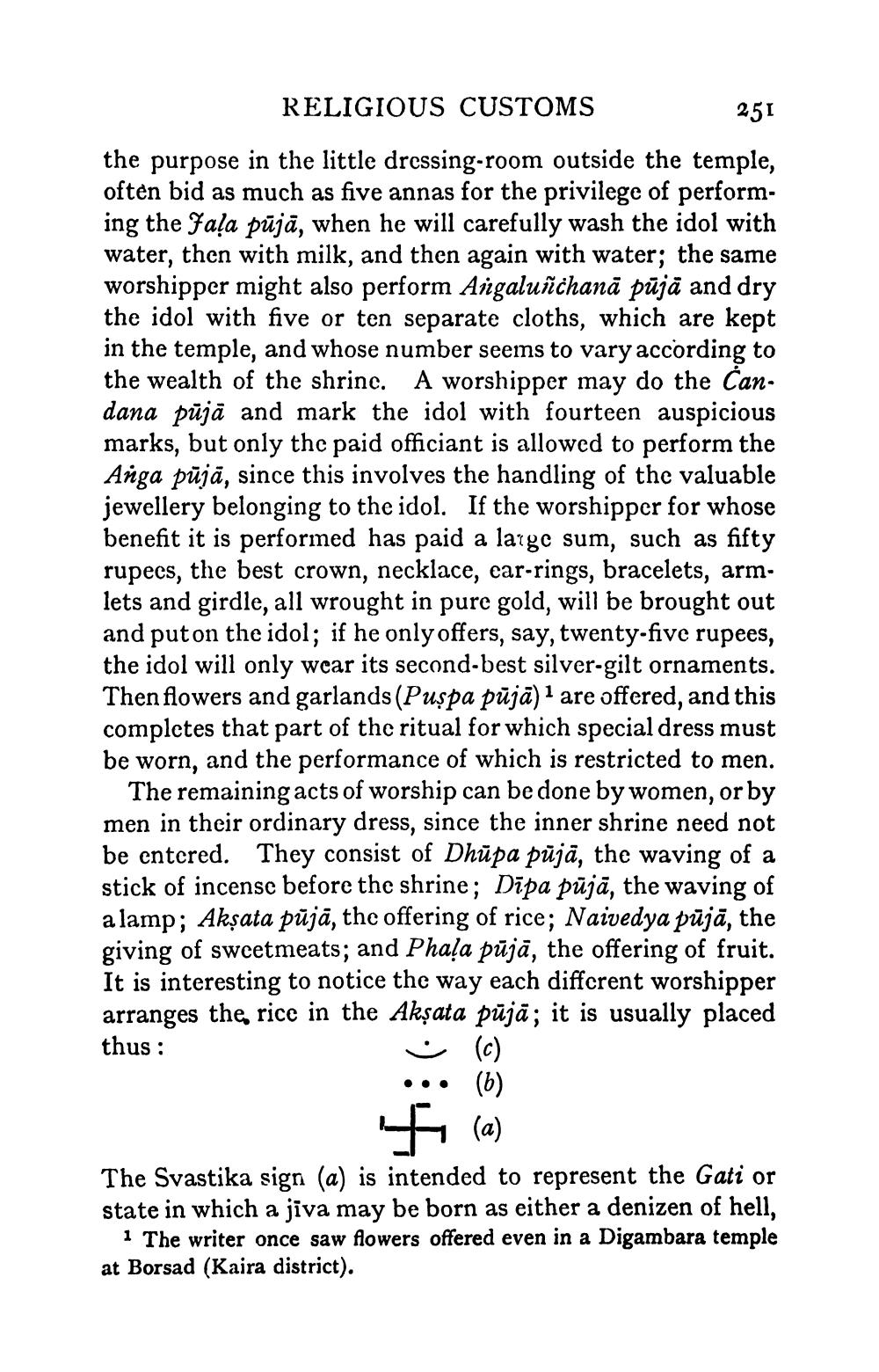________________
RELIGIOUS CUSTOMS
251
the purpose in the little dressing-room outside the temple, often bid as much as five annas for the privilege of performing the Faļa pājā, when he will carefully wash the idol with water, then with milk, and then again with water; the same worshipper might also perform Aigaluñčhanā pūjā and dry the idol with five or ten separate cloths, which are kept in the temple, and whose number seems to vary according to the wealth of the shrine. A worshipper may do the Candana pūjā and mark the idol with fourteen auspicious marks, but only thc paid officiant is allowed to perform the Anga pūjā, since this involves the handling of the valuable jewellery belonging to the idol. If the worshipper for whose benefit it is performed has paid a large sum, such as fifty rupees, the best crown, necklace, car-rings, bracelets, armlets and girdle, all wrought in pure gold, will be brought out and puton the idol; if he only offers, say, twenty-five rupees, the idol will only wear its second-best silver-gilt ornaments. Then flowers and garlands (Pușpa pūjā) 1 are offered, and this completes that part of the ritual for which special dress must be worn, and the performance of which is restricted to men.
The remaining acts of worship can be done by women, or by men in their ordinary dress, since the inner shrine need not be entered. They consist of Dhūpa pūjā, the waving of a stick of incense before the shrine; Dīpa pūjā, the waving of a lamp; Akşata pūjā, the offering of rice; Naivedya pūjā, the giving of sweetmeats; and Phaļa pājā, the offering of fruit. It is interesting to notice the way each different worshipper arranges the rice in the Akşata pūjā; it is usually placed thus :
· (c) ... (6)
(a) The Svastika sign (a) is intended to represent the Gati or state in which a jiva may be born as either a denizen of hell,
1 The writer once saw flowers offered even in a Digambara temple at Borsad (Kaira district).




